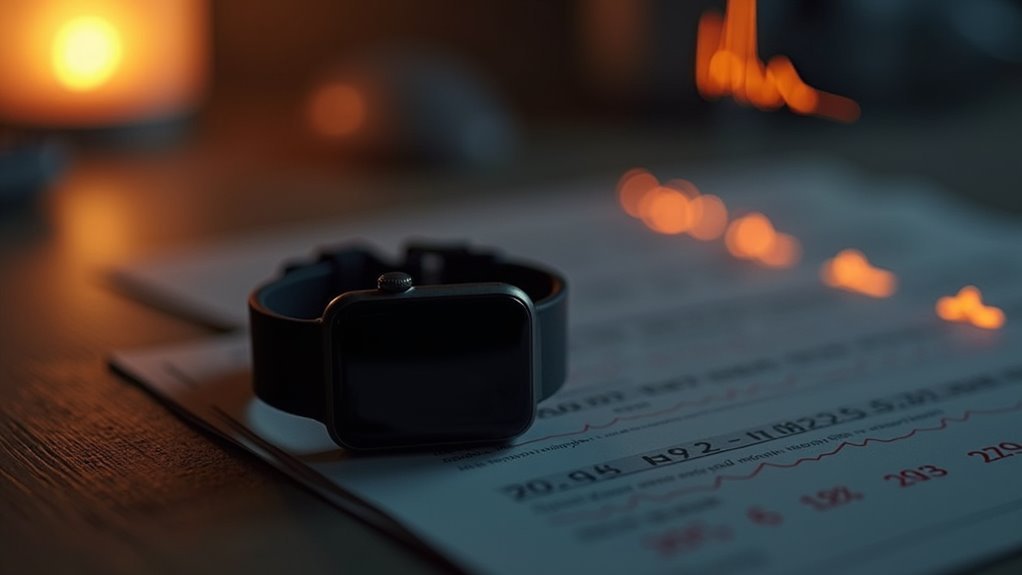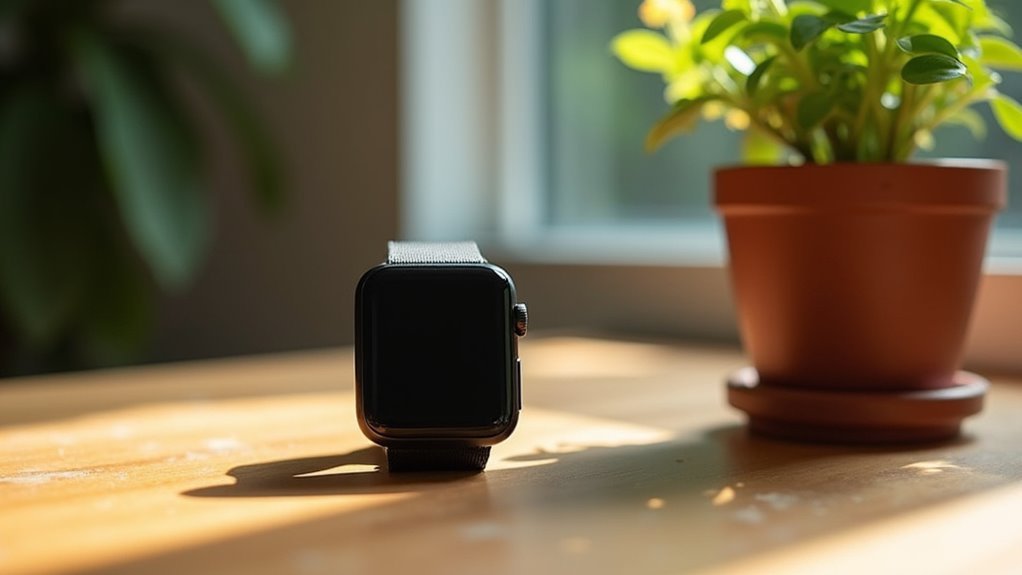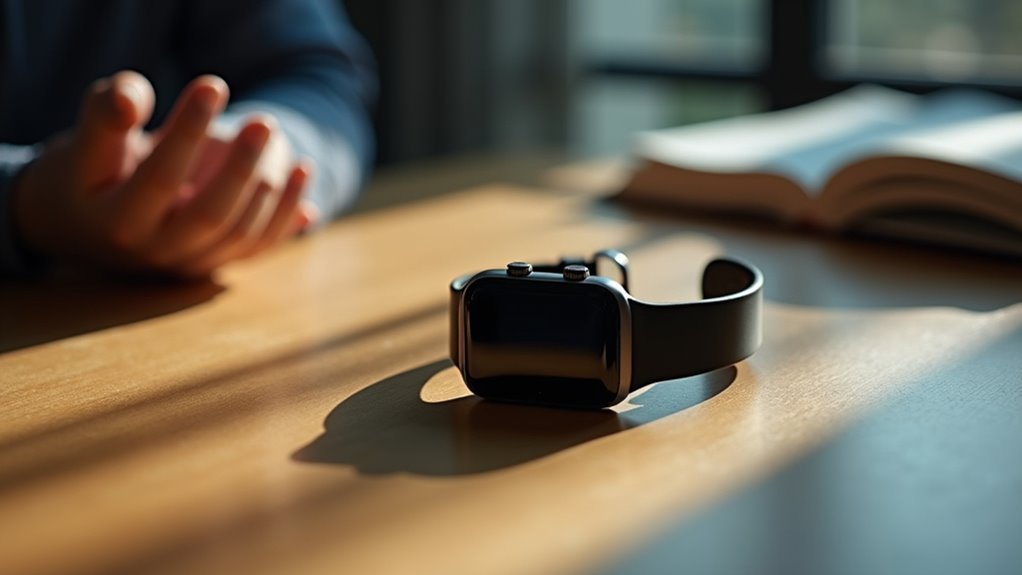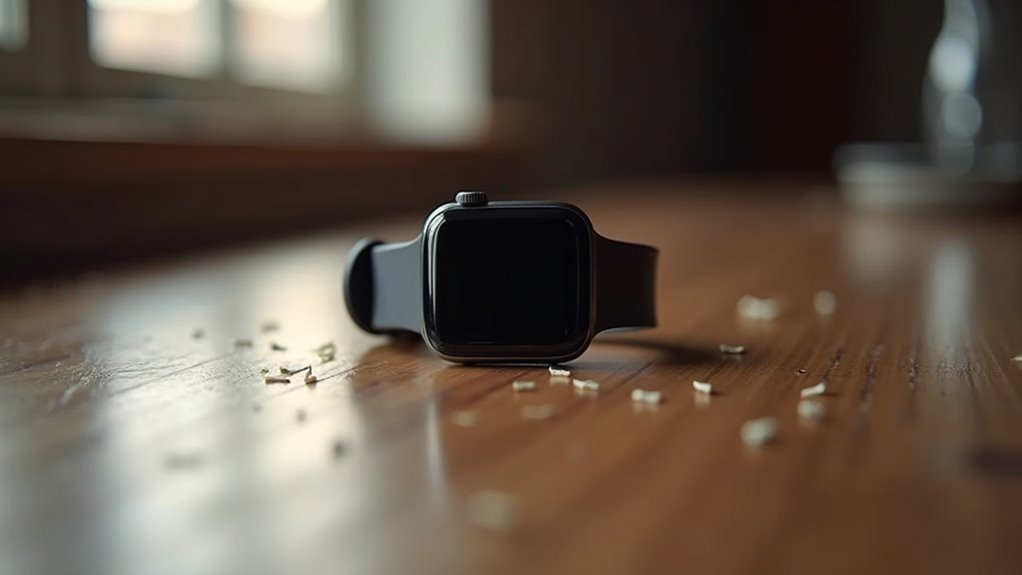Wearable oxygen monitors face five critical limitations that can compromise your health decisions. They lose accuracy when your SpO₂ drops below 85% – precisely when you need reliable readings most. Most lack FDA approval for medical decision-making, while environmental factors like ambient light and motion create interference. Skin pigmentation affects accuracy by up to 20%, potentially masking dangerous oxygen levels in darker-skinned users. Without clinical context, you’ll likely misinterpret temporary fluctuations, missing concerning patterns that require professional evaluation.
Accuracy Issues at Critical Oxygen Levels

When your oxygen levels drop to critical ranges, wearable monitors face their greatest accuracy challenges. Most devices lose reliability when your SpO₂ falls below 85%, with error margins expanding considerably at these dangerous thresholds.
Wearable monitors become dangerously unreliable when oxygen levels fall below 85%, precisely when accurate readings matter most for survival.
You’ll find inconsistent readings between different smartwatch models, with some overestimating while others underestimating your actual oxygen levels.
This reduced accuracy creates serious risks—your device might miss critical hypoxemia events when you need detection most. The measurements become unreliable precisely when precision matters for your health and safety.
Clinical pulse oximeters remain far more dependable at low SpO₂ levels, which is why validation studies consistently show wearables struggling in these ranges. You can’t rely on consumer devices for accurate monitoring during respiratory emergencies or severe oxygen desaturation episodes. For reliable monitoring, look for FDA-cleared models that have undergone proper medical validation and testing protocols.
Lack of FDA Approval for Medical Decision Making
Despite their growing popularity, most wearable oxygen monitors can’t legally guide your medical decisions because they lack FDA approval as diagnostic devices.
While FDA clearance exists for select devices like OxiWear’s ear pulse oximeter and Masimo’s Radius VSM, these approvals come with strict limitations preventing standalone diagnostic use.
Here’s why FDA approval matters for your healthcare decisions:
- Clinical reliability – Non-approved devices don’t meet clinical-grade validation standards, making their data unreliable for therapeutic decisions.
- Provider trust – Healthcare professionals must confirm abnormal readings with standard medical equipment before acting on wearable data.
- Legal protection – Using non-FDA-cleared monitors for medical treatment creates regulatory liabilities and safety risks.
Your doctor can’t legally base treatment decisions solely on data from consumer-grade wearables without proper validation. The OxiWear system utilizes Bluetooth transmission to communicate with smartphone apps, enabling real-time monitoring capabilities for approved clinical and home use applications.
Environmental Interference Affecting Sensor Performance

Even if manufacturers solve the FDA approval challenge, your wearable oxygen monitor still faces a fundamental obstacle: environmental interference that can render its readings meaningless.
Ambient light from sunlight or artificial sources causes photodiodes to misinterpret reflected light as blood oxygenation data. Nearby electronic devices like phones and Wi-Fi routers introduce electromagnetic interference that disrupts sensor signals.
Sunlight and electronic interference from everyday devices can cause wearable oxygen sensors to produce completely inaccurate blood oxygenation readings.
Temperature fluctuations and humidity affect calibration while causing moisture buildup between the sensor and your skin. Your daily movements create motion artifacts that confuse pulse oximetry algorithms, especially in wrist-based monitors.
Environmental contaminants like dirt, oils, and sweat degrade sensor contact quality, while hair, tattoos, or clothing further impede light transmission and reduce accuracy. The mechanical pressure from tight-fitting sensor bands can also interfere with proper device function and measurement accuracy.
Skin Pigmentation and Placement Impact on Readings
Beyond environmental factors, your wearable oxygen monitor confronts a deeper physiological challenge that manufacturers have struggled to address for decades.
Your skin pigmentation directly affects how accurately these devices measure your oxygen levels, with darker skin tones experiencing a troubling 20% positive bias in readings.
This technological limitation creates three critical concerns:
- Hidden hypoxemia – Your monitor may show normal readings while you’re actually experiencing dangerously low oxygen levels.
- Placement variability – Different finger positions can produce inconsistent results due to varying skin thickness and blood flow patterns.
- Healthcare disparities – Racial and ethnic minorities face higher risks of misdiagnosis and delayed treatment.
You’ll need to understand these limitations when interpreting your device’s readings, especially if you have darker skin tones. These biases become particularly problematic when AI algorithms incorporate pulse oximeter data without accounting for the underlying measurement inaccuracies.
User Misinterpretation Without Clinical Context

While technical limitations pose significant challenges for wearable oxygen monitors, the way you interpret their readings presents an equally serious problem. Without clinical context, you’re likely to misinterpret data from these devices, leading to incorrect conclusions about your health status. You might panic over temporary fluctuations that are completely normal or dismiss concerning patterns that warrant medical attention.
Healthcare professionals possess the expertise to interpret wearable data within your overall health picture, considering factors like medications, medical history, and environmental conditions. When you rely solely on raw numbers without this clinical oversight, you’re operating with incomplete information. Inexpensive consumer devices may exhibit significant variability in their measurements compared to medical-grade equipment used in clinical settings.
The algorithms these devices use to analyze your health data can affect accuracy, yet most users don’t understand these underlying processes, making proper interpretation nearly impossible.
Frequently Asked Questions
Can Wearable Oxygen Monitors Detect Early Signs of Sleep Apnea?
You can use wearable oxygen monitors to detect moderate to severe sleep apnea with high accuracy, but they’re less reliable for mild cases and can’t replace professional sleep studies.
How Often Should I Replace My Wearable Oxygen Monitor for Accuracy?
You should replace your wearable oxygen monitor annually or when it shows consistent inaccuracies compared to medical-grade devices. Heavy use, physical damage, or software issues may require earlier replacement for best accuracy.
Do Wearable Oxygen Monitors Work Underwater or at High Altitudes?
You’ll find most wearable oxygen monitors aren’t designed for underwater use due to water pressure and connectivity issues. At high altitudes, they’ll generally work but may need more frequent monitoring due to lower atmospheric oxygen levels.
Can These Devices Monitor Oxygen Levels During Intense Physical Exercise?
You can monitor oxygen levels during intense exercise with wearables, but accuracy decreases considerably. Sweat, movement, and high intensity affect readings. You’ll get reasonable data for moderate exercise, but expect limitations during extreme workouts.
Are Wearable Oxygen Monitors Safe for Children and Pregnant Women?
You’ll find wearable oxygen monitors aren’t recommended for healthy children by pediatricians, as they cause false alarms and anxiety. There’s insufficient research on safety for pregnant women, so consult your doctor first.
In Summary
You shouldn’t rely on wearable oxygen monitors as your sole health indicator. They’re not FDA-approved for medical decisions, can’t provide accurate readings during critical situations, and often malfunction due to environmental factors or skin pigmentation. Without proper clinical context, you’ll likely misinterpret the data. While these devices offer convenience for general wellness tracking, you’ll need professional medical equipment and expertise for serious health monitoring and treatment decisions.





Leave a Reply